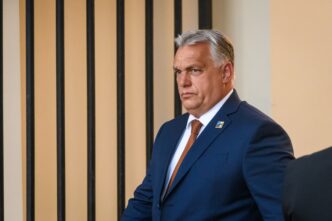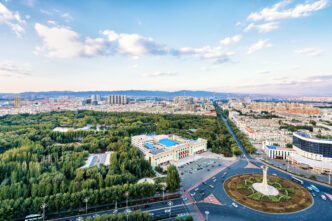In October 2019, as Amazonian bishops convened at the Vatican, an individual entered a nearby church at dawn and seized three indigenous statues brought to Rome for the event. The man then disposed of them in the Tiber River in a video-recorded protest against what he labeled as “pagan idolatry” under Pope Francis’s leadership. Italian police divers quickly retrieved the wooden figures, and they were subsequently displayed once more by the Pope.
This incident highlighted the lengths to which traditionalist critics of Pope Francis were prepared to go to express their dissent towards the first Latin American pontiff. Through individual protests, social media campaigns, conferences, and petitions, these conservatives made it clear they believed themselves to be more Catholic than the Pope, forming a notably vocal opposition to his authority. Leaders within the College of Cardinals might attempt to elect a successor more aligned with their conservative viewpoints following the passing of Pope Francis at 88.
Every pope faces critics, and Francis anticipated resistance to his radical reform agenda after Catholics had become accustomed to more conservative predecessors over two generations. He once joked about hearing that some prelates in Rome were already planning for the next conclave while he was hospitalized.
Critics of Francis were unique in having a living alternative reference point: Pope Emeritus Benedict XVI resided in the Vatican Gardens during the first decade of Francis’s pontificate. The unusual coexistence of a reigning and retired pope created a new dynamic, exacerbating church divisions that experts believe must be addressed before another pope decides to resign. They advocate for measures to prevent a retired pope from inspiring followers in ways that undermine his successor’s leadership.
For a time, Francis tolerated right-wing opposition, often responding to their attacks with silence. At times, he appeared to embrace the criticism as proof of how far a church “obsessed” with rules had strayed from Jesus’s Gospel call to welcome strangers, feed the poor, and show mercy to all. He remarked that it was an honor to be attacked by Americans, referring to the U.S.-based opposition.
After Benedict’s death in 2022, Francis sought to weaken the opposition and consolidate his progressive reforms, even as conservative factions seemed poised to challenge him. Soon after Benedict’s funeral, his former secretary published a memoir highly critical of Francis, and it was revealed posthumously that Cardinal George Pell had anonymously circulated a memo labeling Francis’s pontificate as a “catastrophe.”
Though Francis claimed to welcome criticism, he worked to neutralize opposition through strategic appointments and dismissals while continuing efforts to transform the Church into a “field hospital for wounded souls,” particularly for LGBTQ+ Catholics. After approving blessings for same-sex couples, African bishops united in a notable continental resistance against a papal directive.
Conservative and traditionalist Catholics began distrusting Francis after their beloved Benedict became the first pope in 600 years to resign. They were taken aback when Francis appeared on the balcony of St. Peter’s Basilica without the red velvet cape trimmed with ermine of his predecessors and shocked weeks later when he washed the feet of women and Muslims on Holy Thursday, a ritual previously restricted to men.
Over time, critics’ worst fears materialized. A significant breaking point occurred in 2016 when Francis opened the door for divorced and civilly remarried Catholics to receive communion, prompting accusations of heresy. Four conservative cardinals formally requested clarification, issuing “dubia,” or questions, arguing that church doctrine held that remarried Catholics without annulments were living in sin and could not receive sacraments. Francis never responded.
Conservatives could not have foreseen that years later, Francis would take one of his pontificate’s most controversial steps by re-imposing restrictions on the traditional Latin Mass, which Benedict had relaxed. This move was seen as a declaration of war against traditionalists, the ancient liturgy, and Benedict’s papacy itself.
Francis maintained that his goal was to preserve Church unity. Critics accused him of the opposite, opening a rift, and outrage extended beyond U.S.-based conservative Catholic media and fringe right-wing bloggers. Cardinal Raymond Burke, a “dubia” prelate dismissed early on by Francis, criticized the papal crackdown’s “severity.” Meanwhile, Cardinal Robert Sarah of Ghana, retired Vatican liturgy head, responded with messages citing Benedict’s original 2007 decree to relax restrictions that Francis had revoked.
An earlier media storm was orchestrated by Sarah, who persuaded Benedict to co-author a book reaffirming priestly celibacy as Francis considered ordaining married men to address clergy shortages in the Amazon. The resulting scandal highlighted potential issues with a retired pope influencing an active one, a scenario canon lawyers and theologians warned about when Benedict chose to retain the white papal cassock in retirement and call himself “pope emeritus.”
The controversy subsided after Benedict withdrew as co-author, and Francis dismissed his secretary, Archbishop Georg Gaenswein, believed to be behind the scandal. After Benedict’s death and Gaenswein’s publication of a critical memoir, “Nothing But the Truth,” Francis banished him from the Vatican, later appointing him as ambassador after a period in his native Germany.
When Burke joined a larger group of cardinals questioning Francis’s 2023 synod on the Church’s future, Francis sanctioned him financially. He showed more tolerance towards another critic, retired Hong Kong Cardinal Joseph Zen, who criticized the Pope’s 2018 agreement with China on bishop appointments, accusing Francis of betraying Catholics who remained loyal to the Vatican despite persecution. Francis received Zen at the Vatican, later calling him a “tender soul.”
Francis won few allies with his frequent denunciations of “clericalism,” the idea that priests should be elevated on a pedestal. He turned his Christmas greetings into a tradition of publicly rebuking Vatican bureaucrats, accusing them of gossip, ambition, and spiritual greed. Cardinal Gerhard Mueller of Germany complained that Francis treated Vatican monsignors like “uneducated children.”
Among Francis’s most prominent conservative critics was former Vatican ambassador to the U.S., Archbishop Carlo Maria Viganò. In 2018, Viganò accused Francis of covering up allegations against then-Cardinal Theodore McCarrick, an American, and demanded the Pope’s resignation for allegedly rehabilitating McCarrick from sanctions imposed by Benedict. The uproar faded after Francis expelled McCarrick, and Viganò’s credibility suffered due to conspiracy theories about COVID-19. In 2024, Francis excommunicated Viganò for divisiveness.
Papal biographer Austen Ivereigh noted that Francis dismantled much of the resistance. He viewed the Amazon synod as a positive, defining moment of his pontificate, not due to the statue incident, but because the meeting underscored his pastoral focus on accompanying the faithful. Native peoples of the Amazon were present in St. Peter’s Square, and Francis walked with them to the synod, embodying the pastor among his people.








